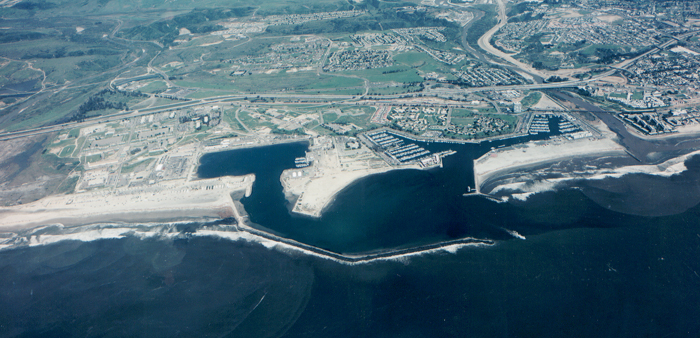
General Information
The Oceanside Harbor/Camp Pendleton Harbor complex is located north of the City of Oceanside and just south of Camp Pendleton Marine Corps Base, 35 miles north of San Diego, in San Diego County, California. The harbor's breakwater and south jetty form an entrance channel. The entrance channel splits to form the Oceanside Channel, which leads to a small craft harbor, and the Del Mar Channel, which leads to Camp Pendleton's Del Mar Boat Basin. Camp Pendleton is a large U.S. Marine Corps facility that dominates the surrounding area.
The U.S. Army Corps of Engineers Los Angeles District dredges this entrance channel on annual basis in order to maintain the federally authorized depth necessary to accommodate the military, commercial and private vessels that use the harbors. The Corps works with Camp Pendleton and the project's local sponsor, the City of Oceanside, to identify the most efficient and cost-effective way to complete the project.
Material dredged from the entrance channel is typically beach-quality sand that is used to re-nourish Oceanside's shoreline from south of the San Luis Rey River discharge to points south to the Oceanside pier and beyond, depending on the quantity dredged each year. This beneficial re-use improves the project's cost effectiveness and provides an economically acceptable way for the City of Oceanside to widen its beach, increasing its recreational value and adding protection for business and residences adjacent to the beach.